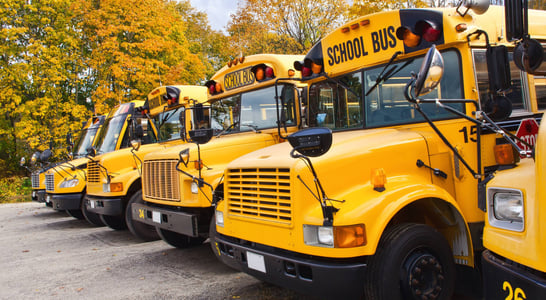
National School Bus Safety Week
Behind the wheel, they navigate the roads of possibility, ensuring the next generation's safe voyage to knowledge with a friendly smile.
A large number of American kids have iconic memories of riding the big yellow bus back and forth to school every day throughout childhood. School buses have been around in the United States for about a century, originally a program that was created to provide children in rural areas with an opportunity to attend school.
Today, more than 480,000 of these yellow school buses run every day throughout the year, providing transport to more than 25 million students. National School Bus Safety Week is here to raise awareness and show appreciation for the opportunity these big yellow buses provide.
History of National School Bus Safety Week
National School Bus Safety Week has roots that can be traced back more than five decades. This event started out in 1969 as a letter writing campaign to Richard M. Nixon, who was the President of the United States at the time. The event was founded by a man named Dick Fischer, who had previously been a California school district transportation director and believed that the children needed more protection.
The first official National School Bus Safety Week was held in 1970 and, out of it, the National Association for Pupil Transportation (NAPT) was founded just five years later in 1975 and now acts as the host for the week’s activities. Over several decades, this has grown into a nationwide event that encourages schools, administrators, drivers and parents to get involved with the safety of the children going to and from school.
How to Celebrate National School Bus Safety Week
Thank a School Bus Driver
Many school bus drivers spend their mornings and afternoons trying to get the children where they need to go while keeping everyone safe. National School Bus Safety Week is an ideal time to provide a note or small gift of thanks to the bus driver who keeps the kids safe on the road.
Host a School Bus Safety Week Campaign
Teachers, parents, school bus drivers, or school administrators might be interested in hosting a campaign in support of National School Bus Safety Week. This can help to teach children about the importance of proper behavior on a school bus, as well as educating the community – including other drivers.
Each year, the National Association for Pupil Transportation hosts a poster contest in honor of the week. School students throughout the nation are encouraged to submit their drawings based on a particular theme that will be judged during state wide competitions and then presented as the campaign poster for the following year.
Follow the Rules of the Road
In order to keep the children on a school bus safe, there are certain rules that drivers of other vehicles must follow. For instance, it is necessary to always stop when a school bus is stopped and has the red “stop” sign out. In addition, school buses drive at slower than average speeds, so be sure to slow down around them and leave a greater distance when following so there is plenty of time to stop.
Also on ...
View all holidaysSuspenders Day
How could suspenders ever have gone out of style? Dig in your closet or visit a store to bring back one of the most fashionable accessories available.
Smart is Cool Day
Unlocking the power of knowledge and embracing curiosity leads to a world of endless possibilities. Smart is the new trendsetter!
We think you may also like...
School Bus Drivers Day
School bus drivers provide a necessary service to our society, helping kids reach their education safely, so give them a big thanks for what they do.
Driving Instructor Day
Guiding new road adventurers, instilling confidence and safety, these mentors empower the journey to skilled and responsible driving.








